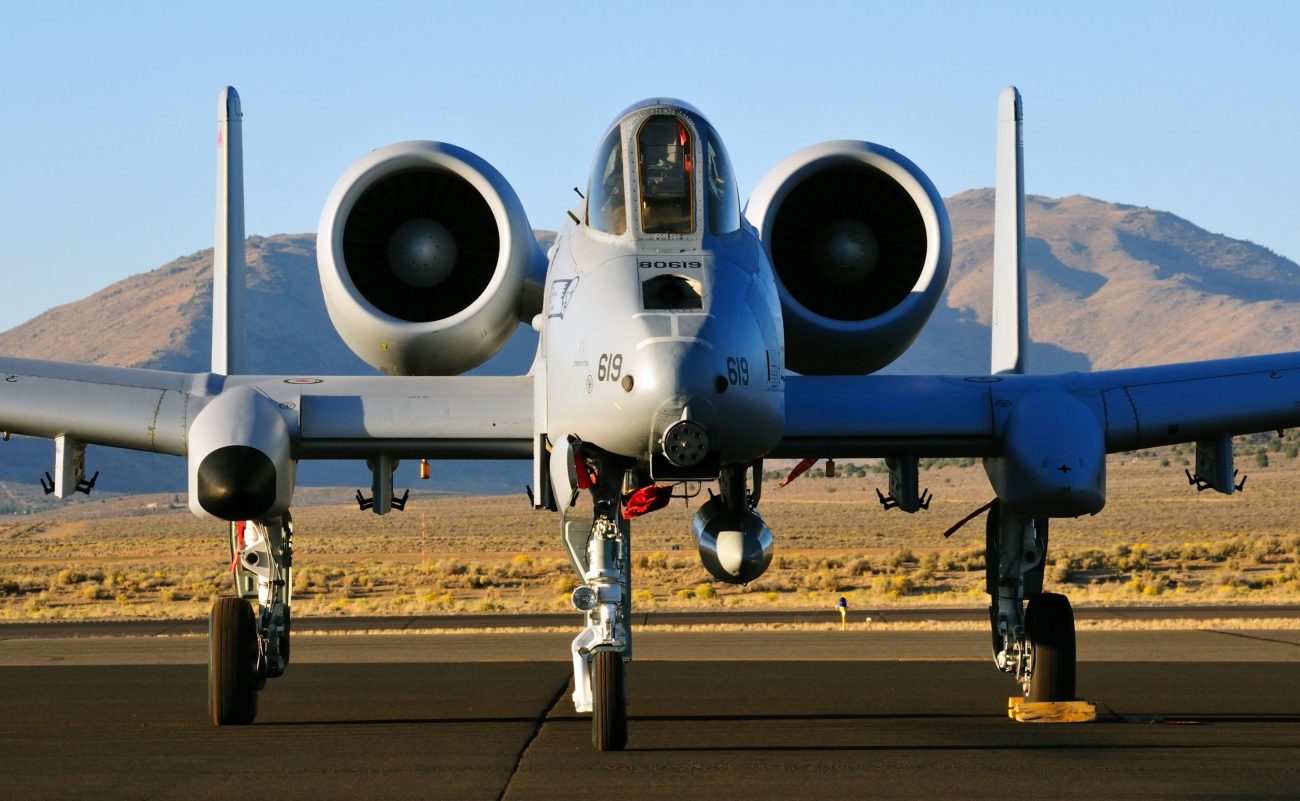Amid escalating tensions between the United States and Iran, A-10 Thunderbolt II “Warthog” aircraft, renowned for providing close air support during the Iraq and Afghanistan wars, are now being deployed for maritime patrols, according to reports.
MUST READ: After Back-To-Back Attacks, US Mulls Creating An Independent Cyber Force; Congress Asks Pentagon For Cost-Benefit Analysis
The “Warthogs” have been included in an augmented deployment of US aircraft and ships in the Strait of Hormuz, located off the coast of Iran.
Cmdr. Tim Hawkins, the spokesperson for the US 5th Fleet, said that in addition to A-10 Thunderbolt II Warthogs, Navy destroyers, Coast Guard fast response cutters, P-8 maritime patrol aircraft, and unmanned systems are also included in the ongoing patrols.
Hawkins emphasized that the escalated defensive stance is a direct reaction to Iran’s recent “unwarranted and unlawful behavior of late.”
Following Iran’s recent seizure of two oil tankers, tensions have significantly heightened between the United States and Iran. As a result, US Navy warships stationed in the Persian Gulf region have ramped up their patrols in the strategically vital Strait of Hormuz.

According to recent statements from Pentagon and White House officials, Iran has engaged in acts of harassment, attacks, or interference with a total of 15 merchant ships flying international flags since 2021.
In late March, a detachment of A-10s was sent to Al Dhafra Air Base in the United Arab Emirates, within the US Central Command region.
At the time, Retired US Air Force Major General Larry Stutzriem asserted that the A-10 aircraft still maintains its significance in supporting the missions conducted by CENTCOM over the Middle East.
Following their deployment, these aircraft have undergone specialized training focused on engaging and striking targets located in the sea.
The exercise aimed to enhance the coordination between aircraft and ships when countering surface threats, as highlighted in a video shared by the Air Force on Twitter.
Cleared Hot! ?
Last week, AFCENT’s regional close air support experts executed a dry and live fire training exercise with joint tactical air controllers on U.S. Coast Guard Cutters in the CENTCOM area of operations.#A10 #DoD #CENTCOM #TeamADAB pic.twitter.com/3BIYhIee2u
— US AFCENT (@USAFCENT) May 3, 2023
Originally conceptualized and designed to neutralize the Soviet tanks during the tense Cold War era, the A-10 aircraft has since ventured into real-world combat, predominantly demonstrating its prowess in the vast theater of land-based conflicts, most notably in the rugged terrains of Iraq and Afghanistan.
Earning the nickname “tanker killer,” the A-10 proved its capabilities during the 1991 Persian Gulf War by effectively destroying Iraqi tanks and searching for mobile Scud missile launchers.
A-10s For Maritime Role
In some noteworthy instances, the A-10 has demonstrated its versatility by assuming a maritime role. In 2011, these aircraft engaged in targeted strikes against small boats in Libya, and in 2016, they conducted surveillance missions over the South China Sea.
Furthermore, an exercise in 2017 witnessed A-10 planes engaging in simulated attack maneuvers against small boats resembling the fast vessels commonly utilized by the Iranian Revolutionary Guard Corps Navy.
These instances underscore the adaptability and multi-faceted capabilities of the A-10 in various operational contexts. US military officials say the A-10 jets may be utilized in multiple experimental capacities.
One potential application is their use in shooting down aerial drones, as their slower flight speed could offer a tactical advantage in such scenarios. Lt. Gen. Alexus Grynkewich, the commander of the 9th Air Force, discussed this possibility with Defense One in April.
The US Air Force has long sought to retire the A-10, citing concerns about its relevance in modern warfare and vulnerability to Russian air defenses. However, these attempts have been thwarted by Congress.

Despite this, in early April, the Air Force announced that it had sent one A-10 aircraft to storage, marking the beginning of a plan to decommission 21 planes by September.
The remaining fleet is slated to be phased out and placed in long-term storage by 2029, as Air Force Chief of Staff Gen. Charles Q. Brown Jr. disclosed in March.
However, from a political standpoint, the decision to deploy A-10s instead of modern fighters to the Middle East, especially considering the USAF’s intention to retire them entirely by 2029, may not instill strong confidence among regional US allies.
This is particularly significant given the escalating Iranian activities in the region. Regional allies might interpret the use of A-10s, rather than advanced fifth-generation jets like the F-22, as a potential indication of reduced American military commitment to the region and the security of these allies.
- Contact the author at ashishmichel(at)gmail.com
- Follow EurAsian Times on Google News




